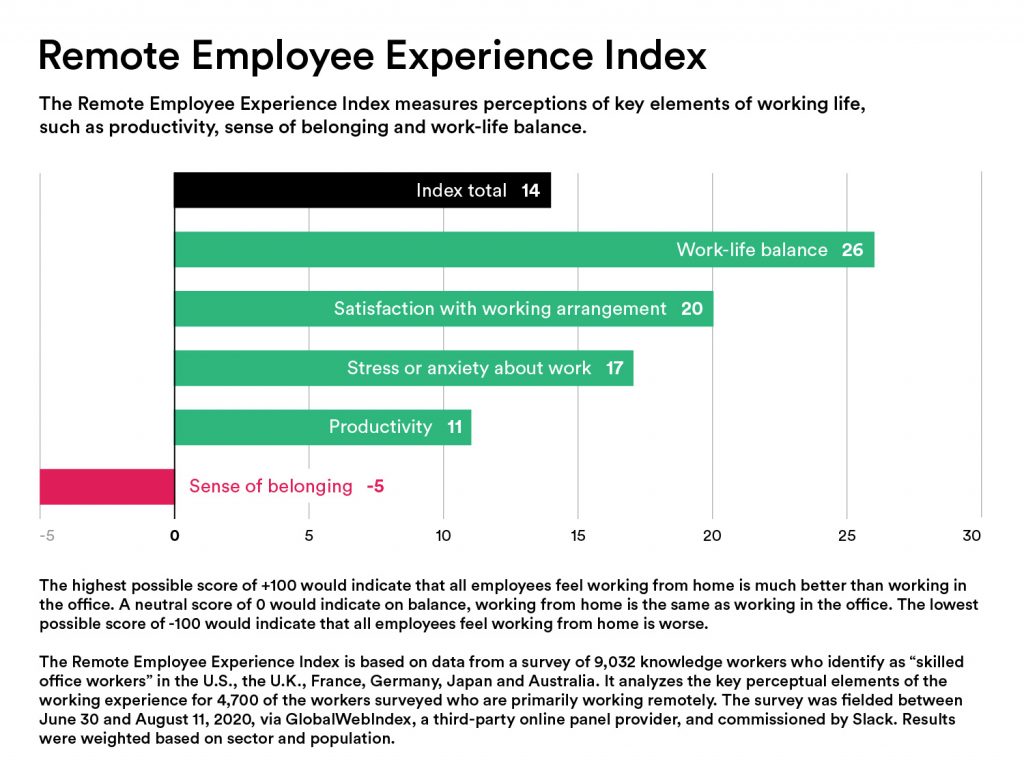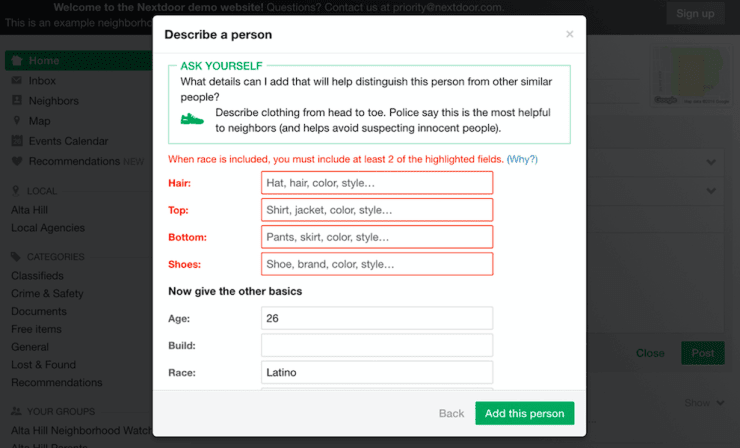Slack just released some fascinating research on remote work in the age of COVID-19. There are some important takeaways every company should think deeply on.

People lean towards a hybrid workplace
Despite all the claims of “remote is the future”, the majority of Americans surveyed said that, post-COVID, they’d like to spend some time in the office and some time at home. Very few want to spend 5 days a week in the office, and they appreciate saving time and money working from home.
I suspect many more would have been excited about fully remote, save for one major pain point cited in the research: human connection. People are feeling less connected to their coworkers, and this seems to be one of the main things driving them to think about a hybrid workplace.
The office is not necessary – opportunities to connect as humans are
It’s clear from these results that the office as a workplace is unnecessary, but the office is an easy (if not cheap) way to drive some human connection. That said, it’s uneven, biased towards those who naturally connect with others, and frustrating for truly remote workers.
The future is much more likely about creating structured opportunities for people to connect, both online and in-person. With the focus on connection, these interactions can intentionally drive inclusivity and, frankly, spend more money on peak experiences rather than office perks that become less novel over time. (Hell, even just from a COVID-19 standpoint, safety at one big in-person event is much more doable than safety in an office open to dozens, hundreds, or thousands of people every day.)
People Ops teams need to start carving out roles that focus on creating connections and belonging
In other words, they need to hire community professionals. Connection and belonging has become a big focus for People Ops teams in recent years, but it will need to be a top priority for hybrid and remote-first companies. Employee engagement is heavily affected by connection, so someone needs to be dedicated to not just building that into the day-to-day, but building intentional spaces for people to connect. This might look like:
- Programs that connect employees over coffee
- Career development buddies
- Interest/hobby groups
- Identity groups
- Team offsites/onsites
- Big internal summits
- Onboarding processes geared towards building connection
- Etc
This will certainly involve events, but won’t work if it’s simply an event planner hire. Experienced community professionals know that the logistics of the event are secondary to driving the desired human connection.
It also requires thinking through how you foster conversation and connection around touchy, emotional issues, something many tech companies are struggling with. These are community-building and moderation issues. Luckily there are a bunch of us who are very experienced at tackling these challenges and opportunities. Rather than learn these skills from scratch, People Ops should look towards the experts.
—
This stuff is work. My team’s engagement score has actually improved during the pandemic, but that’s due to hours and hours of work and experimentation on the part of me and my lieutenants. If we leave these things to chance, we’re going to see this get worse.




 These days, it’s rare to hear anything but awe when community managers talk about Slack. The common consensus seems to be that Slack is the perfect community platform. This overexcitement worries me because a) it’s not and b) different communities require different types of platforms.
These days, it’s rare to hear anything but awe when community managers talk about Slack. The common consensus seems to be that Slack is the perfect community platform. This overexcitement worries me because a) it’s not and b) different communities require different types of platforms.